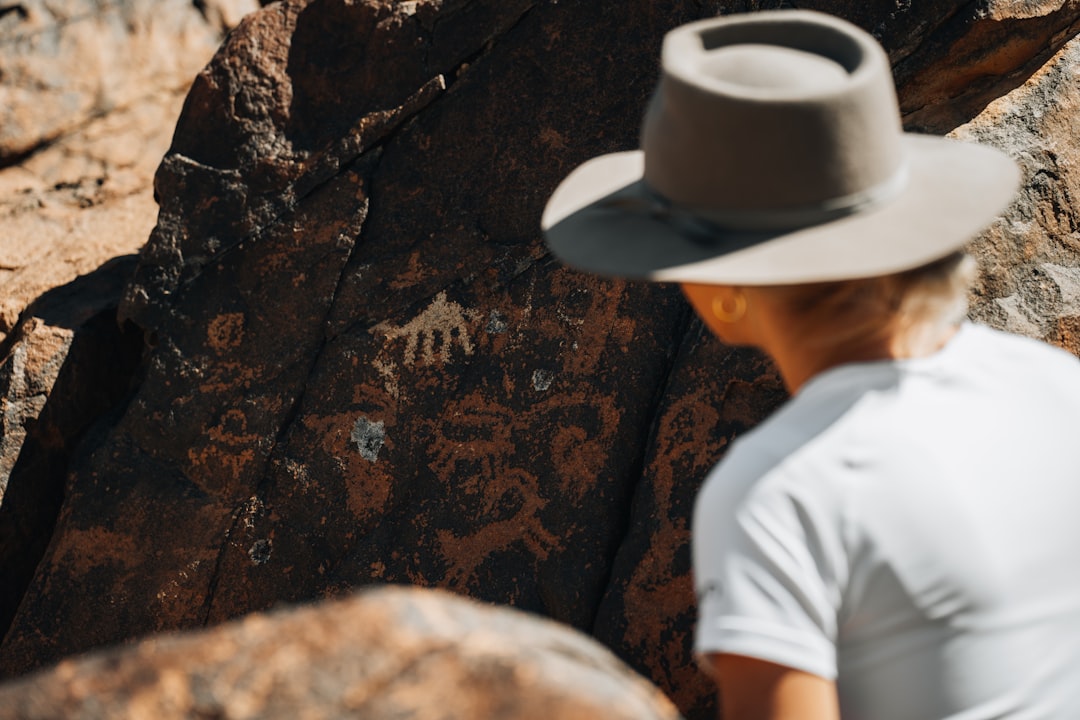Support our educational content for free when you purchase through links on our site. Learn more
The Nephilim Giants: 10 Legendary Titans You Didn’t Know About 🗿
Imagine stumbling upon an ancient text that hints at colossal beings roaming the earth—giants born from forbidden unions between angels and humans. Sounds like the plot of a fantasy novel, right? Yet, the Nephilim giants are very real in the tapestry of ancient lore, biblical mysteries, and cultural legends. From their cryptic mentions in the Bible to their echoes in global mythologies, these towering figures have fascinated historians, theologians, and storytellers alike.
But who exactly were the Nephilim? Were they literal giants, mythic symbols, or something in between? And why do their stories continue to captivate us thousands of years later? In this comprehensive guide, we unravel the origins, interpretations, and cultural impact of the Nephilim giants—plus reveal 10 legendary figures you absolutely need to know about. Ready to walk among giants? Let’s dive in!
Key Takeaways
- The Nephilim are mysterious giants mentioned in the Bible and ancient texts, often described as the offspring of “sons of God” and human women.
- Their story spans theology, mythology, and folklore, linking them to giants in Greek, Norse, and Arabian legends.
- Scientific evidence for literal giants is lacking; many claims are hoaxes or misinterpretations.
- The Nephilim continue to inspire modern culture, from books and movies to video games.
- Understanding the Nephilim offers insight into ancient beliefs about power, rebellion, and the divine-human boundary.
Hungry for more ancient mysteries and legendary tales? Explore our Folklore and Legends and Mythology Stories collections at History Hidden™ for your next adventure!
Table of Contents
- Quick Tips and Fascinating Facts About the Nephilim Giants ⚡
- Unearthing the Origins: The Mysterious History and Background of the Nephilim 👣
- Etymology Explored: What Does “Nephilim” Really Mean? 🔍
- The Nephilim in Ancient Texts: Biblical Accounts and Beyond 📜
- Origins of the Nephilim Myth: From Fallen Angels to Giants 👼🗿
- Nephilim Interpretations: Theological, Historical, and Cultural Perspectives 🧠
- Nephilim and Arabian Paganism: Cross-Cultural Giants and Legends 🌍
- Fossil Evidence and Archaeological Claims: Did Giants Really Walk the Earth? 🦴
- 10 Legendary Nephilim Giants in Myth and History You Should Know About 🏆
- Nephilim in Popular Culture: Movies, Books, and Video Games That Keep the Legend Alive 🎬📚🎮
- Scientific Debunking and Skepticism: Separating Fact from Fiction in Nephilim Stories 🔬❌
- Footprints Through Time: The Lasting Impact of Nephilim on Modern Beliefs and Conspiracy Theories 🕵️♂️
- Conclusion: Why the Nephilim Giants Continue to Captivate Our Imagination ✨
- Recommended Links for Further Nephilim Exploration 🔗
- FAQ: Your Burning Questions About the Nephilim Giants Answered ❓
- Reference Links: Trusted Sources and Scholarly Works on the Nephilim 📚
Quick Tips and Fascinating Facts About the Nephilim Giants ⚡
The Nephilim, those legendary giants of biblical lore, have captivated imaginations for centuries. They’re often depicted as towering figures of immense strength and power, leaving behind a legacy of mystery and intrigue.
Here are some quick facts to get you started on your journey into the world of the Nephilim:
- The Nephilim are mentioned in the Bible, specifically in Genesis 6:4 and Numbers 13:33. These passages describe them as beings of extraordinary size and strength, often associated with violence and wickedness.
- The term “Nephilim” is often translated as “giants” or “fallen ones.” The exact meaning is debated, but it’s clear that they were considered powerful and fearsome beings.
- The Nephilim’s origins are shrouded in mystery. Some believe they were the offspring of fallen angels and human women, while others suggest they were simply a race of giants who existed before the Flood.
- The Nephilim have inspired countless stories and legends throughout history. They’ve appeared in literature, movies, and video games, their image forever etched in our collective imagination.
Want to delve deeper into the mysteries of the Bible? Check out our article on Bible Mysteries to uncover hidden truths and fascinating insights.
Unearthing the Origins: The Mysterious History and Background of the Nephilim 👣

The Nephilim are shrouded in mystery, their origins a source of endless debate and speculation. They’re mentioned in the Bible, but their story goes far beyond the pages of scripture, weaving its way through ancient myths, folklore, and even modern conspiracy theories.
The Nephilim in the Bible: A Brief Overview
The Bible provides two main accounts of the Nephilim:
- Genesis 6:4: This passage describes the Nephilim as the offspring of “the sons of God” and “the daughters of men.” The exact identity of the “sons of God” is debated, but some scholars believe they were angels who rebelled against God. This interpretation suggests that the Nephilim were a hybrid race, born from a forbidden union.
- Numbers 13:33: This passage describes the Nephilim as giants who inhabited the land of Canaan. The spies sent by Moses to scout the land report seeing these giants, who made them feel like “grasshoppers” in comparison.
The Nephilim Beyond the Bible: Ancient Myths and Legends
The Nephilim’s story doesn’t end with the Bible. They appear in various ancient myths and legends, often as powerful beings associated with giants, monsters, or even gods.
- The Book of Enoch: This ancient Jewish text provides a more detailed account of the Nephilim, describing them as fallen angels who mated with human women and produced giants of immense size and strength.
- Greek Mythology: The Titans, a race of giants who ruled the world before the Olympians, share similarities with the Nephilim. They were known for their immense power and their rebellion against the gods.
- Norse Mythology: The Jötnar, giants who lived in Jötunheim, the land of giants, also bear resemblance to the Nephilim. They were often depicted as powerful and dangerous beings, capable of great feats of strength.
The Nephilim’s presence in these diverse cultures suggests that the concept of giants and powerful beings was widespread in the ancient world.
Etymology Explored: What Does “Nephilim” Really Mean? 🔍
The word “Nephilim” itself is a source of much debate and speculation. Its exact meaning is unclear, but several interpretations have been proposed.
- “Fallen ones” or “those who cause to fall”: This interpretation is based on the Hebrew root word naphal, which means “to fall.” This interpretation suggests that the Nephilim were beings who had fallen from grace or who caused others to fall.
- “Giants” or “mighty ones”: This interpretation is based on the fact that the Nephilim are often described as beings of great size and strength.
- “Terrorizers” or “oppressors”: This interpretation is based on the fact that the Nephilim are often associated with violence and wickedness.
The exact meaning of “Nephilim” remains a mystery, but it’s clear that the word carries a sense of power, danger, and perhaps even a hint of divine judgment.
The Nephilim in Ancient Texts: Biblical Accounts and Beyond 📜
The Nephilim’s story is woven into the fabric of ancient texts, appearing in both religious and secular writings. These accounts offer glimpses into the beliefs and imaginations of people who lived centuries ago.
In the Hebrew Bible: A Tale of Giants and Rebellion
The Hebrew Bible, or Old Testament, is the primary source of information about the Nephilim. They are mentioned in two key passages:
- Genesis 6:1-4: This passage describes the Nephilim as the offspring of “the sons of God” and “the daughters of men.” It also states that the Nephilim were “mighty men who were of old, the men of renown.” This passage is often interpreted as a warning against the dangers of mixing the divine and the human.
- Numbers 13:33: This passage describes the Nephilim as giants who inhabited the land of Canaan. The spies sent by Moses to scout the land report seeing these giants, who made them feel like “grasshoppers” in comparison. This passage highlights the fear and awe that the Nephilim inspired in the Israelites.
Beyond the Bible: Echoes of Giants in Ancient Texts
The Nephilim’s story is not confined to the Bible. They appear in other ancient texts, suggesting that the concept of giants was widespread in the ancient world.
- The Book of Enoch: This ancient Jewish text provides a more detailed account of the Nephilim, describing them as fallen angels who mated with human women and produced giants of immense size and strength. This text also describes the Nephilim as being responsible for teaching humans about warfare, magic, and other forbidden knowledge.
- The Epic of Gilgamesh: This ancient Mesopotamian epic tells the story of Gilgamesh, a king who is two-thirds god and one-third human. He is known for his strength and his quest for immortality. Some scholars believe that Gilgamesh’s story is a reflection of the Nephilim myth, with Gilgamesh representing a hybrid being of divine and human origin.
Origins of the Nephilim Myth: From Fallen Angels to Giants 👼🗿
The origins of the Nephilim myth are shrouded in mystery, but several theories have been proposed.
The Fallen Angel Theory: A Forbidden Union
One of the most popular theories is that the Nephilim were the offspring of fallen angels and human women. This theory is based on the passage in Genesis 6:4, which describes the Nephilim as the children of “the sons of God” and “the daughters of men.”
- The Book of Enoch: This ancient Jewish text provides a more detailed account of this theory, describing the Nephilim as the offspring of fallen angels who rebelled against God and mated with human women. These angels, known as the Watchers, are said to have taught humans about forbidden knowledge, including warfare, magic, and astrology.
- Theological Interpretations: This theory has been embraced by some Christian theologians, who see it as a warning against the dangers of mixing the divine and the human. They argue that the Nephilim represent the consequences of sin and rebellion against God.
The Giant Theory: A Race of Powerful Beings
Another theory is that the Nephilim were simply a race of giants who existed before the Flood. This theory is based on the fact that the Nephilim are often described as beings of great size and strength.
- Archaeological Evidence: Some scholars point to archaeological evidence of giant skeletons as proof of the existence of the Nephilim. However, these claims are often disputed, with many experts attributing the bones to extinct animals or misidentified human remains.
- Folklore and Legends: The concept of giants is widespread in folklore and legends around the world. These stories may reflect a fascination with the idea of beings who are larger and more powerful than humans.
Nephilim Interpretations: Theological, Historical, and Cultural Perspectives 🧠
The Nephilim have been interpreted in various ways throughout history, reflecting different theological, historical, and cultural perspectives.
Theological Interpretations: A Warning Against Sin and Rebellion
Many theologians view the Nephilim as a warning against the dangers of sin and rebellion against God. They see the Nephilim’s story as a cautionary tale about the consequences of mixing the divine and the human.
- The Book of Enoch: This ancient Jewish text emphasizes the Nephilim’s role in corrupting humanity and teaching them about forbidden knowledge. It suggests that the Nephilim were a manifestation of God’s judgment against those who disobeyed him.
- Christian Theology: Some Christian theologians see the Nephilim as a symbol of the fallen nature of humanity and the need for redemption. They argue that the Nephilim’s story highlights the importance of staying true to God’s will and resisting temptation.
Historical Interpretations: A Reflection of Ancient Beliefs
Some historians believe that the Nephilim myth reflects ancient beliefs about giants and powerful beings. They argue that the Nephilim were a product of human imagination, inspired by the awe-inspiring power of nature and the desire to explain the unknown.
- Ancient Myths and Legends: The concept of giants is widespread in ancient myths and legends around the world. These stories may reflect a fascination with the idea of beings who are larger and more powerful than humans.
- Archaeological Evidence: Some scholars point to archaeological evidence of giant skeletons as proof of the existence of the Nephilim. However, these claims are often disputed, with many experts attributing the bones to extinct animals or misidentified human remains.
Cultural Interpretations: A Source of Inspiration and Fear
The Nephilim have inspired countless stories and legends throughout history, reflecting their enduring power in the human imagination. They have been both a source of fear and a source of inspiration, captivating people with their immense size, strength, and mystery.
- Literature and Art: The Nephilim have appeared in literature, art, and film, often as powerful and dangerous beings. They have been used to symbolize the forces of chaos and destruction, as well as the potential for human greatness.
- Modern Culture: The Nephilim continue to be a popular subject in modern culture, appearing in books, movies, and video games. Their story continues to resonate with people, reminding us of the enduring power of myth and legend.
Nephilim and Arabian Paganism: Cross-Cultural Giants and Legends 🌍
The Nephilim’s story extends beyond the confines of the Hebrew Bible, finding echoes in the myths and legends of other cultures, particularly in Arabian paganism.
Giants in Arabian Mythology: Echoes of the Nephilim
Arabian mythology is rich with stories of giants, often depicted as powerful and fearsome beings. These giants share similarities with the Nephilim, suggesting a possible connection between these ancient traditions.
- The Jinn: In Arabian mythology, the Jinn are supernatural beings who are often described as giants. They are said to be made of fire and are capable of great feats of strength and magic. Some scholars believe that the Jinn may be a reflection of the Nephilim myth, with the Jinn representing a race of powerful beings who are both feared and respected.
- The Qareen: In Arabian mythology, the Qareen is a supernatural being that is said to be attached to every human being. It is often described as a giant who whispers temptations and evil thoughts into the human’s ear. Some scholars believe that the Qareen may be a reflection of the Nephilim’s role as corrupting influences on humanity.
Cross-Cultural Connections: The Spread of Giant Myths
The presence of giant myths in both Hebrew and Arabian traditions suggests that the concept of giants was widespread in the ancient world. These myths may have spread through trade, migration, or cultural exchange, reflecting a shared human fascination with the idea of beings who are larger and more powerful than humans.
- The Importance of Storytelling: Stories about giants have been passed down through generations, serving as a way to explain the unknown, explore the limits of human power, and warn against the dangers of pride and rebellion.
- The Enduring Power of Myth: The Nephilim’s story continues to resonate with people today, reminding us of the enduring power of myth and legend. These stories offer a glimpse into the beliefs and imaginations of people who lived centuries ago, and they continue to inspire and fascinate us today.
Fossil Evidence and Archaeological Claims: Did Giants Really Walk the Earth? 🦴
The question of whether giants actually existed has captivated imaginations for centuries. While the Bible and ancient myths speak of giants, some people believe that fossil evidence and archaeological claims provide concrete proof of their existence.
The Search for Giant Skeletons: A History of Hoaxes and Misidentification
Throughout history, there have been numerous reports of giant skeletons being discovered. However, many of these claims have been debunked as hoaxes or misidentifications.
- The Cardiff Giant: In 1869, a 10-foot-tall stone statue was discovered in New York, sparking widespread excitement and speculation that it was the remains of a giant. However, the statue was later revealed to be a hoax, carved by a skilled sculptor.
- The Giant of Lucerne: In 1577, a large skeleton was discovered near Lucerne, Switzerland. It was initially believed to be the remains of a 19-foot-tall giant, but it was later identified as the bones of a mammoth.
Scientific Skepticism: The Limits of Evidence
While some people continue to believe in the existence of giants, most scientists are skeptical of these claims. They argue that there is no credible scientific evidence to support the existence of giants.
- The Fossil Record: The fossil record provides no evidence of humans or other primates growing to extraordinary sizes.
- Human Evolution: Human evolution is a gradual process, and there is no evidence of a sudden jump in size or stature.
The Importance of Critical Thinking: Separating Fact from Fiction
It’s important to approach claims of giant skeletons with a critical eye. Many of these claims are based on hearsay, speculation, or outright hoaxes. It’s essential to rely on credible scientific evidence and to avoid jumping to conclusions.
10 Legendary Nephilim Giants in Myth and History You Should Know About 🏆

The Nephilim, those mythical giants of biblical lore, have captured imaginations for centuries. Their stories are woven into the fabric of ancient myths and legends, often serving as a testament to their immense power and fearsome nature. Here are 10 legendary Nephilim giants you should know about:
- Og of Bashan: A giant king of the Rephaim, a race of giants mentioned in the Bible. He was known for his immense size and strength, and he ruled over the land of Bashan. According to the Bible, Og was defeated by the Israelites, who took his land.
- Goliath: A Philistine giant who challenged the Israelites to single combat. He was known for his immense size and strength, and he carried a massive spear and shield. Goliath was defeated by the young shepherd David, who used a slingshot to kill him.
- Anak: The father of a race of giants known as the Anakim, who inhabited the land of Canaan. The Anakim were known for their immense size and strength, and they were considered a formidable enemy of the Israelites.
- Sheshai: A giant mentioned in the Bible, who was one of the sons of Anak. He was known for his immense size and strength, and he was a powerful warrior.
- Ahiman: Another son of Anak, who was known for his immense size and strength. He was a powerful warrior and a formidable enemy of the Israelites.
- Talmai: A third son of Anak, who was known for his immense size and strength. He was a powerful warrior and a formidable enemy of the Israelites.
- Nimrod: A legendary king who is often associated with the Nephilim. He was known for his great strength and his ability to hunt wild animals. Some scholars believe that Nimrod was a giant, and his story may reflect the Nephilim myth.
- Orion: A giant hunter in Greek mythology. He was known for his immense size and strength, and he was said to be the son of Poseidon, the god of the sea. Some scholars believe that Orion’s story may be a reflection of the Nephilim myth, with Orion representing a powerful and dangerous being who was both feared and respected.
- Jormungandr: A giant serpent in Norse mythology. He was known for his immense size and strength, and he was said to be the offspring of Loki, the god of mischief. Some scholars believe that Jormungandr’s story may be a reflection of the Nephilim myth, with Jormungandr representing a powerful and dangerous being who was both feared and respected.
- Titan: A race of giants in Greek mythology. They were known for their immense size and strength, and they ruled the world before the Olympians. Some scholars believe that the Titans may be a reflection of the Nephilim myth, with the Titans representing a powerful and dangerous race of beings who were both feared and respected.
Nephilim in Popular Culture: Movies, Books, and Video Games That Keep the Legend Alive 🎬📚🎮
The Nephilim, those mythical giants of biblical lore, have captured the imaginations of storytellers and artists for centuries. Their stories have been retold and reimagined in countless works of literature, film, and video games, ensuring that their legend lives on.
Movies: From Biblical Epics to Fantasy Adventures
The Nephilim have appeared in a variety of films, ranging from biblical epics to fantasy adventures. These films often depict the Nephilim as powerful and dangerous beings, capable of great feats of strength and destruction.
- The Bible (1966): This epic film features a scene depicting the Nephilim as giants who are defeated by the Israelites.
- The Seventh Seal (1957): This classic film by Ingmar Bergman features a scene depicting Death as a giant who plays chess with a knight.
- Clash of the Titans (1981): This fantasy film features a scene depicting the Kraken, a giant sea monster, as a Nephilim.
Books: From Fantasy Novels to Horror Stories
The Nephilim have also been featured in a variety of books, ranging from fantasy novels to horror stories. These books often explore the Nephilim’s origins, their powers, and their impact on humanity.
- The Shadowhunter Chronicles by Cassandra Clare: This popular series features a race of Nephilim who are half-angel and half-human. They are known for their strength, their magical abilities, and their role in protecting humanity from demons.
- The Book of Enoch: This ancient Jewish text provides a detailed account of the Nephilim, describing them as fallen angels who mated with human women and produced giants of immense size and strength. This text also describes the Nephilim as being responsible for teaching humans about warfare, magic, and other forbidden knowledge.
Video Games: From Action Adventures to Role-Playing Games
The Nephilim have also made their way into the world of video games, appearing in a variety of genres, from action adventures to role-playing games. These games often feature the Nephilim as powerful enemies or as playable characters.
- Darksiders: This action-adventure game series features the Four Horsemen of the Apocalypse as Nephilim, the offspring of angels and demons.
- Diablo 3: This action role-playing game features the Nephalem, a race of powerful beings who are the descendants of angels and demons.
Scientific Debunking and Skepticism: Separating Fact from Fiction in Nephilim Stories 🔬❌
While the Nephilim have captivated imaginations for centuries, scientific evidence and skepticism offer a different perspective on these mythical giants.
The Lack of Scientific Evidence: A Reality Check
Despite numerous reports of giant skeletons and other evidence, there is no credible scientific evidence to support the existence of giants.
- The Fossil Record: The fossil record provides no evidence of humans or other primates growing to extraordinary sizes.
- Human Evolution: Human evolution is a gradual process, and there is no evidence of a sudden jump in size or stature.
Skeptical Interpretations: Unraveling the Myths
Skeptics often interpret the Nephilim as a product of human imagination, inspired by the awe-inspiring power of nature and the desire to explain the unknown.
- Ancient Myths and Legends: The concept of giants is widespread in ancient myths and legends around the world. These stories may reflect a fascination with the idea of beings who are larger and more powerful than humans.
- Exaggeration and Misidentification: Many reports of giant skeletons have been debunked as exaggerations or misidentifications. For example, the Cardiff Giant was later revealed to be a hoax, carved by a skilled sculptor.
The Importance of Critical Thinking: Separating Fact from Fiction
It’s important to approach claims of giant skeletons and other evidence with a critical eye. Many of these claims are based on hearsay, speculation, or outright hoaxes. It’s essential to rely on credible scientific evidence and to avoid jumping to conclusions.
Footprints Through Time: The Lasting Impact of Nephilim on Modern Beliefs and Conspiracy Theories 🕵️♂️
The Nephilim, those mythical giants of biblical lore, have left an enduring legacy, influencing modern beliefs and conspiracy theories.
The Nephilim in Modern Beliefs: A Persistent Presence
The Nephilim continue to be a popular subject in modern culture, appearing in books, movies, and video games. Their story continues to resonate with people, reminding us of the enduring power of myth and legend.
- Religious Interpretations: Some religious groups continue to believe in the existence of the Nephilim, seeing them as a warning against the dangers of sin and rebellion against God.
- Paranormal Investigations: Some paranormal investigators believe that the Nephilim are responsible for unexplained phenomena, such as giant footprints and strange lights in the sky.
Conspiracy Theories: The Nephilim as a Source of Mystery and Intrigue
The Nephilim have also become a popular subject of conspiracy theories, with some people believing that they are still alive and hidden from view.
- The Ancient Astronaut Theory: Some proponents of the ancient astronaut theory believe that the Nephilim were extraterrestrial beings who visited Earth in the past.
- The Giant Skeleton Hoax: The discovery of giant skeletons has been used to support claims of the Nephilim’s existence, even though many of these claims have been debunked as hoaxes or misidentifications.
The Enduring Power of Myth: A Reflection of Human Fears and Desires
The Nephilim’s story continues to fascinate and intrigue us, reminding us of the enduring power of myth and legend. These stories offer a glimpse into the beliefs and imaginations of people who lived centuries ago, and they continue to inspire and fascinate us today.
Conclusion: Why the Nephilim Giants Continue to Captivate Our Imagination ✨

After wandering through ancient scriptures, dusty legends, and modern pop culture, one thing is crystal clear: the Nephilim giants are more than just biblical curiosities — they are timeless symbols of mystery, power, and the unknown. Whether you lean toward the fallen angel theory, see them as mythic giants born from human imagination, or view them as allegories warning against hubris and rebellion, the Nephilim continue to ignite curiosity and debate.
From the enigmatic passages in Genesis and Numbers to the elaborate tales in the Book of Enoch, and from ancient Near Eastern folklore to contemporary video games, the Nephilim’s story is a rich tapestry woven across cultures and millennia. While scientific skepticism keeps us grounded, the allure of giants roaming the earth — whether literal or metaphorical — remains irresistible.
So, whether you’re a history buff, a theology enthusiast, or just someone who loves a good giant tale, the Nephilim invite you to explore the blurred lines between fact and legend. And if you’ve been itching to dive deeper into biblical mysteries, don’t forget to explore our Bible Mysteries series for more hidden gems!
Recommended Links for Further Nephilim Exploration 🔗
Ready to dig deeper into the world of giants and ancient mysteries? Here are some must-have books and resources to fuel your curiosity:
-
The Book of Enoch (R.H. Charles Translation) — Explore the ancient text that expanded the Nephilim mythos.
Amazon -
Giants: Sons of the Gods by Xaviant Haze — A modern exploration of Nephilim legends and their cultural impact.
Amazon -
The Nephilim and the Pyramid of the Apocalypse by E.W. Bullinger — Delve into biblical interpretations and archaeological perspectives.
Amazon -
The Shadowhunter Chronicles by Cassandra Clare — Fictional but inspired by Nephilim lore, perfect for fantasy lovers.
Amazon -
Who Are the Nephilim? – Biblical Archaeology Society — Scholarly insights and archaeological context.
Biblical Archaeology Society
FAQ: Your Burning Questions About the Nephilim Giants Answered ❓

Who were the Nephilim in the Bible and what was their purpose?
The Nephilim are described in Genesis 6:1-4 as the offspring of the “sons of God” and “daughters of men,” often interpreted as a hybrid race of giants or mighty warriors. Their purpose, according to some theological views, was to symbolize the corruption and wickedness that led to the Flood. They were “men of renown,” suggesting they had great power and influence but also contributed to moral decay.
Were the Nephilim purely evil or did they have other roles?
While many sources emphasize their violent and corrupt nature, some interpretations see them as tragic figures caught between divine and human realms, embodying the consequences of forbidden unions.
What is the significance of the Nephilim giants in ancient mythology and history?
The Nephilim represent a cross-cultural archetype of giants found in many ancient mythologies, symbolizing strength, rebellion, and the boundary between gods and humans. Their stories reflect human attempts to explain the extraordinary — whether through divine punishment, heroic tales, or cautionary legends about pride and sin.
How do they compare to giants in other cultures?
Similar beings appear in Greek Titans, Norse Jötnar, and Arabian Jinn myths, suggesting a shared fascination with larger-than-life figures who challenge the natural order.
How did the Nephilim giants fit into the biblical account of creation and the early earth?
The Nephilim appear in the pre-Flood narrative, representing a world increasingly corrupted by sin and rebellion. Their presence is part of the broader biblical theme of humanity’s fall from grace and the need for divine intervention through the Flood. Post-Flood, references to Nephilim-like figures (e.g., Anakim) suggest that legends of giants persisted but were diminished.
Did they exist before or after the Flood?
Genesis suggests they existed both before and after the Flood, but their numbers and influence were greatly reduced afterward.
What were the characteristics and abilities of the Nephilim giants according to ancient texts?
Ancient texts describe the Nephilim as immense in size and strength, often possessing supernatural abilities or knowledge. The Book of Enoch credits them with teaching forbidden arts like warfare, astrology, and magic, which contributed to human corruption.
Were they invincible or mortal?
Despite their power, they were mortal and ultimately destroyed, either by divine judgment or human conquest, symbolizing the limits of hubris.
Are there any historical or archaeological evidences that support the existence of the Nephilim giants?
While many claims of giant skeletons have surfaced over centuries, most have been debunked as hoaxes or misidentified remains of extinct animals. No credible scientific evidence supports the literal existence of Nephilim giants.
Why do giant myths persist despite lack of evidence?
They fulfill psychological and cultural needs — explaining the unknown, inspiring awe, and warning against human arrogance.
What role did the Nephilim giants play in the biblical story of Noah’s Ark and the great flood?
The Nephilim’s wickedness is often linked to the moral decay that prompted the Flood. Their presence symbolizes the corruption that made the world ripe for divine cleansing. The Flood narrative serves as a reset, washing away the Nephilim’s influence and restoring order.
Did any Nephilim survive the Flood?
Biblical texts imply that the Flood wiped out the Nephilim, but later references to giants like the Anakim suggest their legacy lingered in folklore and possibly in diminished descendants.
Can the legend of the Nephilim giants be linked to other ancient mythologies and legends of giant beings?
Absolutely! The Nephilim share thematic and narrative elements with giants in Greek, Norse, and Arabian mythologies, among others. These parallels highlight a universal human fascination with beings who blur the line between mortal and divine, embodying power, mystery, and sometimes danger.
What does this say about human culture?
It shows a shared storytelling tradition that uses giants to explore themes of power, rebellion, and the consequences of crossing divine boundaries.
Reference Links: Trusted Sources and Scholarly Works on the Nephilim 📚
- Who Are the Nephilim? – Biblical Archaeology Society — Scholarly insights into the biblical giants.
- Nephilim – Wikipedia — Comprehensive overview with historical context.
- Answers in Genesis: Ken Ham on the Nephilim — A creationist perspective on the Nephilim.
- The Book of Enoch Online — Ancient text describing the Watchers and Nephilim.
- Amazon: The Book of Enoch (R.H. Charles Translation) — Access to a key ancient source.
Ready to explore more legends and myths? Dive into our Folklore and Legends and Mythology Stories collections at History Hidden™ for your next adventure!





